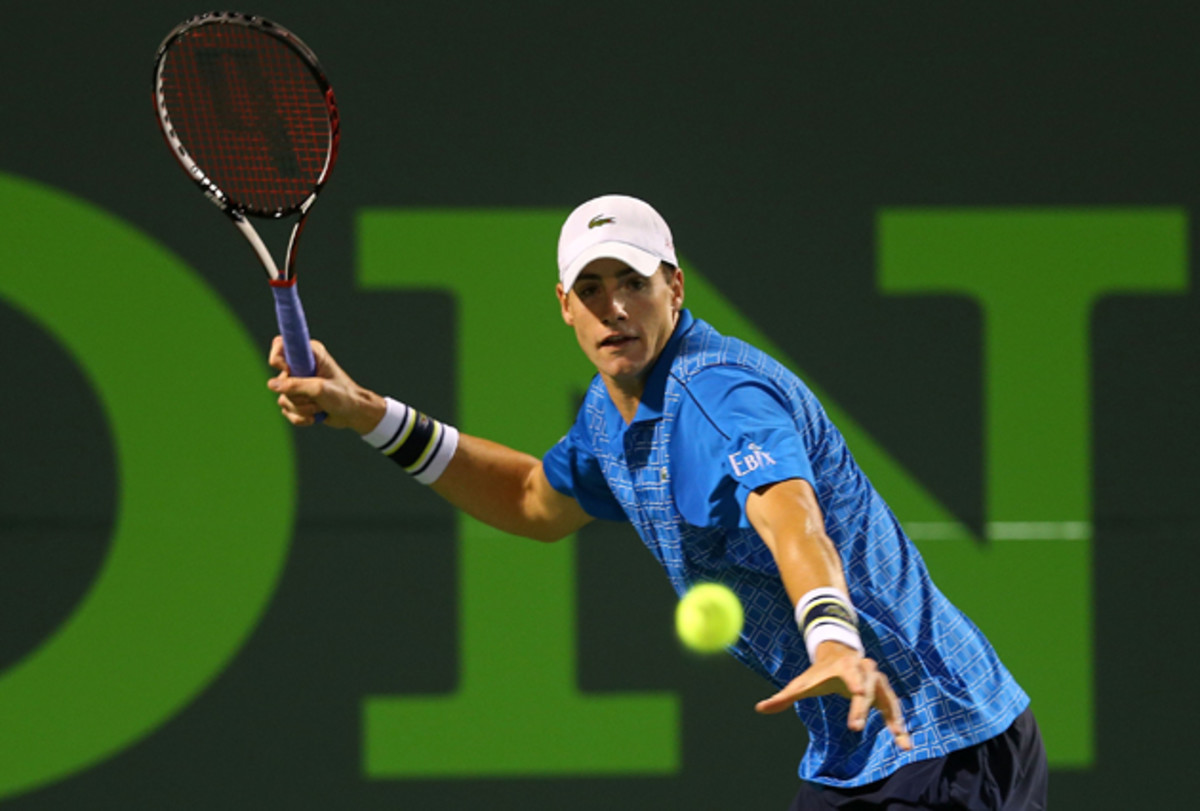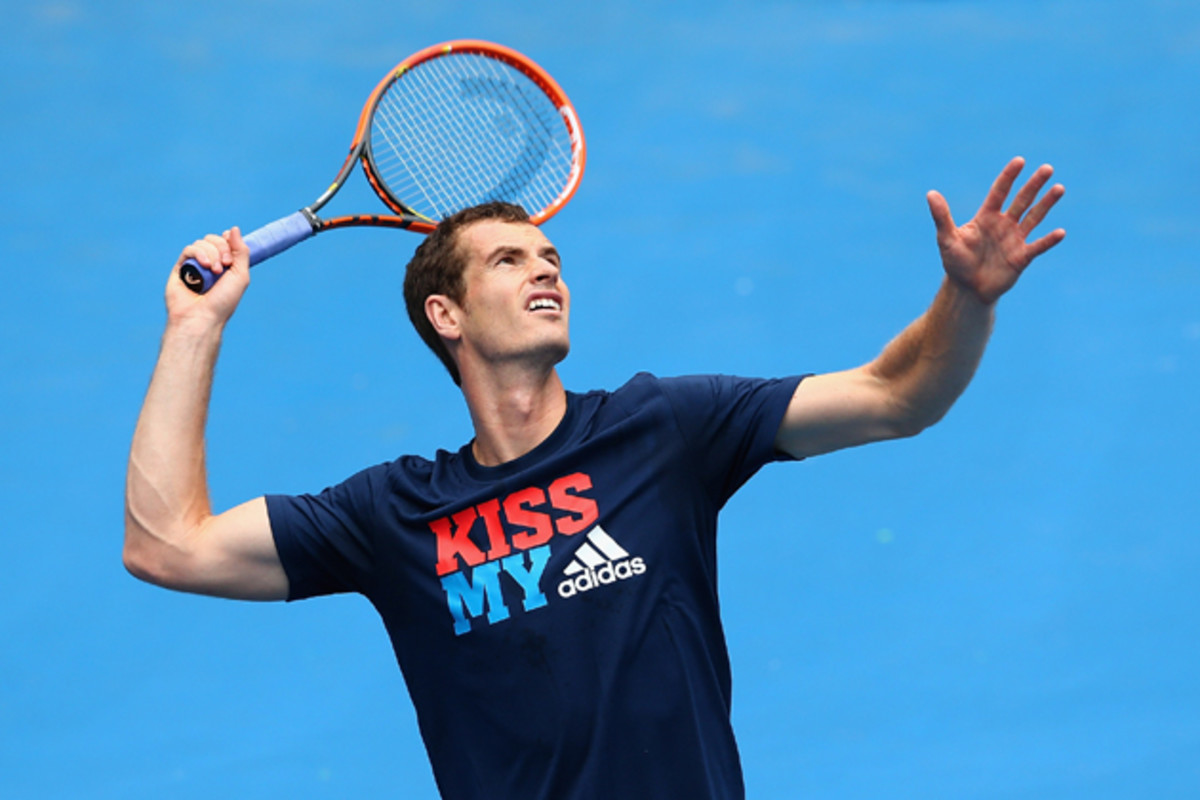11 Ways To Instantly Improve Your Tennis Game
This week, tennis players of all abilities will be glued to the broadcast of the French Open like a good Continental grip on their Wilsons, watching the best players in the world hit shots and slam serves with a speed that would shame most drivers on nearby autoroutes. It’s now, amid the frenzy of Grand Slam tennis, that many amateurs begin to feel a little shame in their own game, wondering why their forehand, backhand, spin, speed, or serve isn’t one-fiftieth that of top-ranked American John Isner, currently 11th in the men’s singles rankings. Okay, you’re not a pro, but there are a few simple, easy changes that amateurs can make to become better players overnight. Here, Isner’s personal coach Mike Sell, along with American pro Bradley Klahn and Matt Little, strength coach for Wimbledon champ Andy Murray, share their top tips on how amateurs can literally turn off the TV and walk out on home court stronger, more successful athletes.
1. Stick with one pattern of play. Stop trying to get creative on court, and start hitting the shots you know will work. “Better players only have one or two patterns of play through a match,” says Sell. “But amateur players have a lot more, they’re more scattered. An amateur player will have several shots they like to hit, but the best players always try to hit their strongest shots.” Sell, who has also coached Mardy Fish and Monica Seles, says that you can easily see just what he’s talking about if you watch or stream a recent match of Isner or Rafael Nadal. “They like to hit forehand serves to start their play,” he notes. “They find that one pattern that works, and they stick with it.”

2. Pull back on your serve speed. The serve is the most important shot in tennis, but that doesn’t mean you should wail on the ball at all cost to the rest of your game, Sell says. “I feel like amateurs try to go out and hit serves as hard as they can, at 100 percent velocity,” he says. “But pros go after 80 percent [speed] and placement. They set up their first shot.” Sell says amateurs should focus on accuracy during their serves, considering any extra speed or spin as added bonuses.
3. Get your back leg behind the ball. Klahn, who won the 2010 NCAA Singles Championship while an undergrad at Stanford, says he always checks to make sure his bodyweight is fully loaded on his back leg before he plays every shot. “Getting your back leg and weight behind the ball allows for easier weight transfer and a much more consistent shot,” says the 23-year old, currently ranked 73rd on the ATP World Tour. “When all my weight is loaded on my back leg, I can transfer that into the shot instead of not getting my feet to the ball and having to reach.” Little, Murray’s strength and conditioning coach, also emphasizes proper footwork. “All strokes start from the ground upward, and being in the right place to hit the ball well is key,” he says.
MORE: Complete Coverage of the 2014 French Open
4. Play the momentum of the match. Losing by a few points to that guy in the club you normally kill on court? Adjust your momentum, Sell says. “A lot of amateurs will lose two points and try to rush to get back,” he says. “But then they’re less organized and more panicky.” Instead, Sell advises amateurs to simply slow down. “Take the full 20 seconds you have between points to gather yourself. Take a deep breath.” On the other hand, if you’re racking up points on your serve, you should work to try to keep up that impetus. “If you’re winning two points in a row, you have some momentum and you can play quicker,” Sell says.

5. Drink on every changeover; snack on every other. “Amateur players don’t keep up their nutrition, they don’t keep eating and drinking throughout the entire match,” says Sell. Watch the pros, though, and you’ll see Nadal sipping on a sports drink and water during every changeover, and Isner eating a little piece of Clif Bar on every other, the coach says. “This helps keep their energy up during the duration of the match. You have to stay hydrated and have energy to win.”
6. Don’t go for the line every shot. It’s one thing to be aggressive—it’s quite another to be reckless. “You don’t want to risk your shots,” says Klahn. “Bring your sights in, and pick a target on the court where you feel confident that you can play a solid offensive shot without incurring much risk of air.” The better you get, the San Diego-based player says, the closer and more comfortable you will become to pinpointing your shots.
7. Identify your opponent’s weaknesses and hit there. Every match has a five-minute warm-up beforehand. Use that time to get ready to play (obviously), but also to test your opponent by hitting forehands and backhands to determine what he’s best or worst at returning. “From that point,” says Sell, “you can strategize how to play to their strengths and weaknesses.” According to the coach, you have two options of attack: “You can attack their weakness right off the bat, or you can make them move through their strengths first so that it opens their weakness up.” What this means, he says, is hitting forehands to a player with a subpar backhand early in the match. “You have to make them uncomfortable to that forehand,” Sell says. “They’ll try to hide their weakness, but then you switch once their backhand opens up.”
MORE: Tips from the Pros: 12 Things Never to Do in a Marathon
8. Stretch. If you don’t typically play well the first 15 minutes of a match, you may want to consider stretching—or stretching more—beforehand. Whether this means taking up static stretching, or holding a pose for a short period of time, or dynamic stretching where you loosen up by moving through specific exercises, just do something, says Little. “Increasing the amount of stretching [Murray] has done had a good impact,” says the British coach of his star player, who won gold at the 2012 Olympics in the men’s singles. “In such a fine motor skill sport like tennis, decreasing stiffness in muscles and joints to allow free-flowing movement can help a great deal.”
9. Get your racquet strung by a professional. Sell says Isner has a guy who weighs, balances, and strings all his racquets with just the right amount of tension to match his style of playing on court. “Most amateurs just go to the tennis store and pick up anything off the shelf,” Sell says. Okay, so you’re not a pro player with a pro player’s salary, but you can fork over a few more bucks to get your racquet professionally strung to complement your style of play. “A slower player would need a livelier string. A baseliner who doesn’t have much power would need a livelier string,” Sell says. “Someone like John [Isner], who probably has the best serve in tennis, wouldn’t need a livelier string because he already has a lot of power.” The coach advises taking a trip to your local club and asking who can restring your racquet.
MORE: Coaching the Masters: 10 Tips for Mastering the Moment
10. YouTube yourself. Or, at the very least, get a buddy to shoot some video of you on court with your smartphone. When you watch the clip, you’ll probably be surprised by how many aspects you can pick up on in your play that should be modified or changed. “There are several things amateurs can see with an untrained eye,” Sell says. “It can help them realize certain things, like they’re standing in the wrong place or hitting [shots] too deep or too short.” Sell adds that video analysis goes a long way in helping pros like Isner improve their game.





